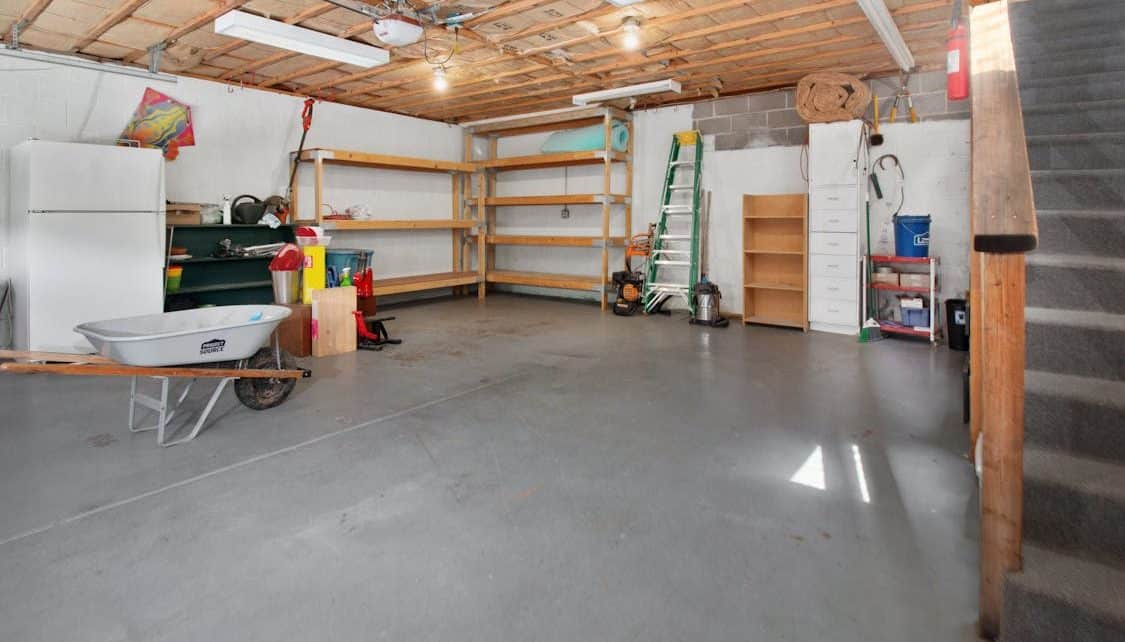When it comes to garage safety, small details can make a significant difference. One such detail often overlooked is the flooring. Among various options, epoxy flooring has emerged as a favored choice for many homeowners.
But can it genuinely boost safety levels in your garage? Let’s explore this question more deeply and see how epoxy flooring can create a safer space for your vehicles and activities.
What Is Epoxy Flooring?
Epoxy flooring is a type of resinous flooring that combines epoxy resins and hardeners. This combination not only creates a durable surface but also forms a chemical bond with the substrate.
When properly applied, it stands up to heavy loads and resists stains and spills. The result? A seamless, glossy finish that enhances the appearance of any garage.
Durable and Resilient
One of the standout qualities of epoxy flooring is its durability. It can withstand the wear and tear from vehicles, tools, and other equipment commonly found in garages.
This toughness translates into a safer environment, as a stable floor reduces the risk of accidents caused by cracks or uneven surfaces. A well-maintained epoxy floor can last 10 to 20 years, depending on usage and maintenance.
Slip-Resistant Options
Safety in any workspace is essential, especially in a garage where oil spills and moisture can create slippery conditions. Fortunately, epoxy flooring can be customized to include slip-resistant additives.
These additives offer increased traction, reducing the likelihood of slips and falls, particularly in areas prone to spills.
If you’re concerned about traction and want added safety, consider installing slip‑resistant protective floor systems to provide better grip underfoot and peace of mind. When choosing your epoxy finish, look for those with textured surfaces to enhance grip.
Enhanced Visibility

Proper lighting is critical in any garage setting, and the glossy finish of epoxy flooring can amplify existing light sources. Epoxy’s reflective quality helps brighten the space, creating better visibility for tasks and reducing the chances of accidents.
When surfaces are well-lit, it’s easier to spot hazards and navigate around the garage safely.
Color Choices for Safety
Epoxy flooring comes in a variety of colors and finishes, allowing you to choose options that enhance safety. Bright colors or contrasting patterns can help highlight specific areas, such as walkways or zones for equipment storage.
Using a distinct color for the parking space can create clear boundaries, guiding both vehicles and pedestrians in the garage.
Easy to Clean
Another critical aspect of safety in garages is cleanliness. A floor that is hard to clean can become a breeding ground for slips and falls. Epoxy flooring, however, is easy to maintain.
Its non-porous surface resists staining and allows spills to be wiped up quickly. Regular cleaning helps keep the space tidy and minimizes hazards posed by debris or liquid spills.
Resistance to Chemicals
Garages often house various chemicals, from motor oil to cleaning agents. Epoxy flooring is resistant to many of these substances, preventing degradation of the floor surface.
This resistance not only prolongs the life of the flooring but also ensures that harmful chemicals don’t seep into the ground, creating a safer environment for everyone.
Temperature Control
Garages can fluctuate in temperature, and extreme cold or heat can lead to issues, especially for vehicles and tools. Epoxy flooring can help moderate temperature shifts, providing insulation against the cold ground.
This feature can protect your vehicle components from freezing and may reduce the likelihood of accidents caused by extreme conditions.
Moisture Control
Moisture is another concern that can affect safety. A damp garage can lead to mold growth and a slippery surface. Epoxy floors are designed to be resistant to water, reducing the risk of moisture-related issues. By keeping your garage dry, you create a healthier environment while minimizing slip hazards.
Installation Process and Professional Help
Installing epoxy flooring is not a DIY project for everyone. While it can be tempting to take on this task alone, professional installation is recommended for optimal results.
Professionals know how to prepare the surface properly, ensuring a strong bond and a flawless finish. They can also advise on the best materials and finishes to suit your specific safety needs.
Preparing the Space
Before applying epoxy, the garage floor must be thoroughly cleaned and prepped. This preparation includes grinding or etching the concrete to promote adhesion.
A well-prepared substrate is essential for ensuring no air pockets or bubbles form beneath the surface, which can lead to peeling or cracking down the line. A professional service will handle this process efficiently, ensuring a solid foundation for safety.
Long-Term Maintenance
After installation, maintaining your epoxy flooring is vital for keeping it in peak condition. Regular cleaning with a mild detergent and water will help keep it looking great and performing well.
Avoid harsh chemicals that can damage the surface. By caring for your epoxy floor, you not only maintain its aesthetic appeal but also its safety features.
Periodic Inspections
Conducting periodic inspections of your garage floor is a smart practice. Look for signs of wear, peeling, or chipping. Addressing minor issues early can prevent larger problems down the road.
It’s also a good idea to check the slip resistance of the surface periodically, ensuring it remains safe for use.
Cost-Effectiveness of Epoxy Flooring
Investing in epoxy flooring is often a wise financial decision. While the initial costs may be higher than traditional flooring options, the longevity and durability of epoxy can lead to savings in the long run. Fewer repairs and replacements mean that your garage flooring won’t be a recurring expense.
Value Addition to Your Property
Beyond safety and maintenance benefits, epoxy flooring can also add value to your property. A well-finished garage floor can enhance the overall appearance of your home, making it more appealing to potential buyers. A clean, stylish garage may set your property apart in a competitive market, making it a sound investment.
Environmental Considerations
Epoxy flooring is often considered eco-friendly, especially when compared to other options that release harmful VOCs (volatile organic compounds).
Many modern epoxy formulations are low in VOCs, contributing to healthier indoor air quality. Choosing environmentally friendly products can make your garage safer for both inhabitants and the planet.
Recyclable Materials
Some manufacturers offer epoxy products made from recycled materials or those that can themselves be recycled at the end of their lifespan. Opting for these products aligns with environmentally conscious choices while still delivering the safety and durability needed in a garage setting.
Customization for Specific Needs
Epoxy flooring can be tailored to meet the unique needs of your garage. Whether you’re looking for a specific color, pattern, or texture, customization options abound.
This personalization not only makes your garage look good but can also enhance safety features like designated areas for different activities or storage.
Addressing Specific Risks
If your garage environment has specific risks, such as high foot traffic or the use of heavy machinery, customizing the epoxy flooring can address these concerns. A thicker coating or additional slip-resistant elements can be strategically placed to ensure maximum safety for your unique situation.
In summary, epoxy flooring holds significant potential for improving garage safety. From its durability and slip resistance to its easy maintenance and customizable features, it stands as a strong contender for those seeking to create a safer environment.
With the right installation and upkeep, epoxy flooring can indeed transform your garage into a safer haven.





